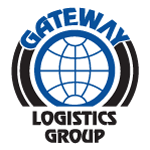- Mistakes like incorrect paperwork, misclassification, and payment delays cause shipment holds and extra costs.
- Proper documentation, accurate HS codes, and real-time tracking keep customs clearance smooth.
- Gateway Logistics handles compliance, duty management, and clearance approvals for fast, hassle-free shipping.
International trade drives global business, but moving goods across borders isn’t as simple as shipping a package from one place to another. Every country has customs regulations in place to control imports and exports, and businesses must follow them with customs clearance services to avoid costly delays, penalties, and supply chain disruptions.
Handling this process alone can be overwhelming, especially with changing trade laws and complex paperwork. That’s where customs brokerage services come in—helping companies clear shipments quickly while staying compliant with trade laws.
Let’s explore how the process works, common pitfalls, and how Gateway Logistics simplifies customs clearance for businesses.
Breaking Down Customs Clearance: How It Works
Every time goods cross international borders, they go through a customs clearance process to ensure they meet the importing country’s trade laws. This involves verifying shipments, collecting duties and taxes, and approving the release of goods for delivery.
Here’s what happens during customs clearance services:
Submission of Required Documents
Before a shipment can enter or leave a country, businesses must submit paperwork that details the contents, value, and origin of the goods. The most common documents include:
- Commercial Invoice: Lists the buyer, seller, item details, and total value of the shipment.
- Packing List: Provides a detailed breakdown of each item in the shipment.
- Bill of Lading (BOL) or Air Waybill (AWB): Serves as a contract between the shipper and carrier.
- Customs Declaration Form: Declares the nature and value of goods to calculate duties and taxes.
Classification and Duty Assessment
Every product is assigned a Harmonized System (HS) code, which determines the applicable tariffs and taxes. Incorrect classification can lead to overpaying duties or customs penalties.
Customs Inspection and Approval
Customs officials may randomly inspect shipments to check for compliance, prohibited goods, or false declarations. If everything is in order, the shipment is released for final delivery. If there are issues, it can be held until further documentation or clarification is provided.
Payment of Duties and Taxes
Import duties, value-added tax (VAT), and other fees must be paid before goods are released. Payment delays can cause shipments to be stuck at customs, leading to storage fees and missed delivery deadlines.
Final Clearance and Delivery
Once customs approves a shipment and all payments are made, the goods are released for transportation to their final destination.
Businesses that handle this process incorrectly can face delays, extra costs, and regulatory penalties. Understanding the most common mistakes can help avoid these issues.
Common Mistakes That Lead to Delays and Extra Costs
Navigating customs clearance requires precision. Even small errors can disrupt supply chains, add unexpected costs, and create frustrating delays.
Here are some of the most common mistakes businesses make when shipping internationally:
Incomplete or Incorrect Documentation
Every shipment requires proper paperwork, including commercial invoices, packing lists, and certificates of origin. Missing or incorrect details—such as inconsistent product descriptions, incorrect values, or missing signatures—can lead to customs holds or rejections. In some cases, businesses may need to resubmit paperwork multiple times, delaying shipments by days or even weeks.
Misclassification of Goods
As you know by now, every product has a unique Harmonized System (HS) code, which determines applicable duties, taxes, and trade restrictions. Using the wrong code, whether due to oversight or an attempt to lower costs, can trigger audits, fines, or even confiscation. Customs authorities have sophisticated systems to detect misclassification, so accuracy is key.
Underestimating Duties, Taxes and Fees
Some businesses assume duties and taxes will be minor, only to be caught off guard when faced with significant charges. Customs duties vary based on product category, country of origin, and trade agreements. Failing to calculate these costs upfront can result in unexpected expenses, strained budgets, and shipment delays if payments are not processed in time.
Ignoring Import Restrictions and Compliance Rules
Certain goods—such as food, pharmaceuticals, and electronics—may require special permits, labeling, or testing certifications. Shipping restricted items without meeting specific regulations can result in delays, rejections, or legal penalties. Some businesses unknowingly import items that violate local trade laws, leading to costly storage fees while awaiting approvals or return arrangements.
Delays in Payment of Duties and Taxes
Customs will not release shipments until all duties and taxes are paid. If businesses overlook this step or fail to process payments promptly, shipments may be held at ports or warehouses, leading to extra storage fees and supply chain disruptions. In some cases, goods may be returned to the sender or even seized.
Failing to Monitor Changes in Trade Regulations
Customs rules and trade agreements change frequently. Businesses that fail to keep up with new tariffs, trade restrictions, or updated documentation requirements risk non-compliance. This can lead to fines, unexpected costs, or shipment refusals. Staying informed about regulation changes is crucial for maintaining smooth operations.
Best Practices for Smooth Customs Clearance
These best practices keep the customs clearance process smooth and predictable.
Double-Check Documentation for Accuracy

Incomplete or inconsistent paperwork causes most customs delays. Customs officials compare documents to ensure details match across forms. Even minor discrepancies—such as a mismatched product description or an incorrect weight—can trigger inspections.
Before submitting, review all paperwork for accuracy. Verify:
- Product descriptions and values match across all forms.
- The recipient’s name and address are correct.
- Permits or certificates for restricted items are included.
A single missing detail can result in delays, storage fees, or even shipment rejection.
Classify Goods with the Correct HS Code
Customs agencies use HS codes to assess taxes, apply trade agreements, and check for restricted goods. Using the wrong HS code can lead to higher duty payments, customs audits and penalties for misclassification, and shipment holds due to missing regulatory requirements. Businesses should classify products correctly before shipping. If unsure, a customs broker can help determine the right code to avoid mistakes.
Plan for Duties, Taxes and Fees in Advance
Unexpected duty charges or tax payments can disrupt supply chains. Customs agencies won’t release goods until all fees are paid. Delayed payments lead to storage fees, missed delivery dates, and potential shipment returns.
To avoid surprises:
- Research duty rates and taxes for each destination.
- Use duty deferral programs where applicable.
- Set up direct deposit or prepayment accounts to speed up customs processing.
Planning in advance prevents financial roadblocks that can stall shipments.
Follow Import Regulations and Compliance Rules
Countries impose specific import restrictions on certain goods. Items like pharmaceuticals, electronics, and food products often require permits, special labeling, or testing certifications. Failing to meet these requirements can result in shipment seizures or legal fines.
Before shipping, confirm whether the product requires special permits, if the labeling meets local regulations, and whether any sanctions or trade restrictions apply to the destination country.
Skipping these steps can cause major disruptions, especially for businesses shipping high-value or regulated products.
Use Digital Tools for Real-Time Shipment Tracking
Modern tracking systems provide real-time updates on a shipment’s location and status. If a shipment gets held up, businesses can react immediately instead of waiting for a delay notice.
Using technology helps businesses:
- Identify potential customs delays early.
- Keep customers informed with accurate delivery timelines.
- Adjust logistics plans based on real-time data.
Automated alerts also allow businesses to stay ahead of potential customs issues instead of dealing with them after they occur.
Benefits of Working with a Customs Expert
Even with proper planning, customs clearance involves complex rules that change frequently. From documentation to compliance checks, a customs brokerage service simplifies the process and helps businesses avoid costly mistakes.
Here’s how:
- Faster Clearance: Professionals handle documentation, inspections, and payments efficiently, reducing delays.
- Cost Savings: Proper classification and duty management prevent overpaying on tariffs.
- Regulatory Compliance: Experts stay updated on trade laws, ensuring shipments meet all legal requirements.
- Risk Management: Avoid penalties, confiscations, and unnecessary expenses with professional guidance.
Choosing the right customs partner can make all the difference in how smoothly your supply chain operates.
Why Gateway Logistics Is the Customs Partner You Need
Navigating the complexities of customs clearance requires expertise and precision. At Gateway Logistics, we specialize in streamlining this process, making sure your shipments move efficiently across borders.
Here’s how we stand out:
Comprehensive Customs Brokerage Services
Our licensed customs brokers play a crucial role in daily interactions with governmental agencies. Supported by up-to-date systems, we handle the import filing process, ensuring proper compliance and reporting for our customers.
Accurate Documentation and Filing
We manage all necessary documentation, including formal and informal entries, NAFTA considerations, and USA pre-clearance. Our electronic reporting and filing systems, integrated with ACH and ABI, facilitate timely and precise submissions.
Automated Tariff Classification and Duty Management
Our team ensures accurate classification of goods, leveraging automated systems to determine preferential tariff treatments and manage duty drawbacks effectively.
Expedited Clearance Approvals
Through our governmental trade portal, we often secure automated clearance approvals prior to cargo discharge, minimizing delays and optimizing efficiency.
C-TPAT Certification and Security Compliance
As a C-TPAT certified company, we actively collaborate with local government agencies to maintain the security of your U.S. inbound shipments, ensuring compliance with the highest standards.
Client-Centric Approach
Beyond standard services, we also offer customer training programs and customs audit preparation, empowering your team with knowledge and readiness.
Partnering with Gateway Logistics means entrusting your customs processes and customs clearance services to a dedicated team committed to accuracy, efficiency, and compliance, allowing you to focus on your core business operations.
Want to simplify your import and export process? Our team at Gateway Logistics is here to help. With customs clearance services Contact us today to streamline your shipments and avoid unnecessary customs delays!

